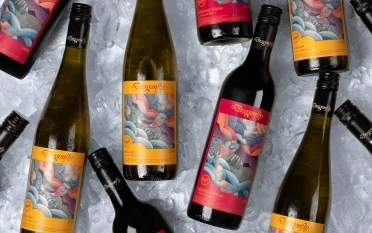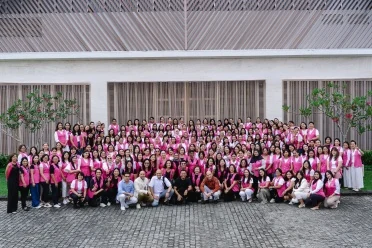During your blisfful visit to Bali, you might notice a small 'box' of leaves adorned with burning incense, flower petal, and a side of food, candy, money, or sometimes a cigarette, deliberately placed on the side of streets. This is called 'Canang Sari'; a humble yet beautiful offering is a symbol of gratitude and a vital part of the Balinese daily ritual. In this article, we delve into the fascinating world of Canang Sari, exploring its symbolism, creation, and the profound significance it holds in Balinese Hinduism.
A Testamental Daily Offering: Canang Sari
A Symbol of Gratitude
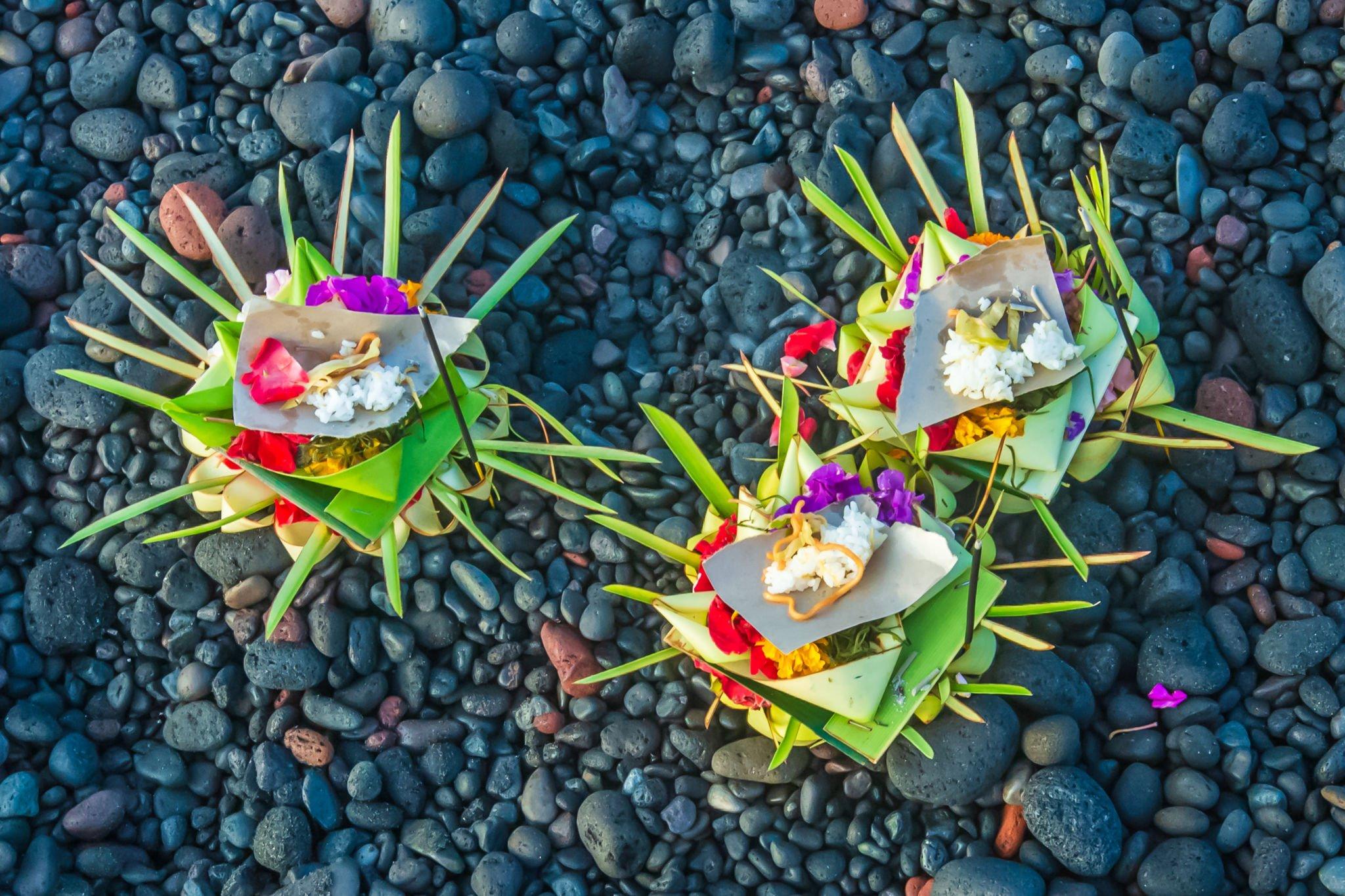
The Canang Sari is more than just a pretty arrangement of colorful flower petals; it is a profound symbol of gratitude in Balinese Hinduism. It is believed to be a way of paying homage to the gods in Svarga (heaven), the creators of life. Balinese Hinduism emphasizes the balance between good and evil, and Canang Sari is also used to appease the needs of demons to maintain this equilibrium. It reflects the understanding that both positive and negative energies coexist in our world.
What's Inside?
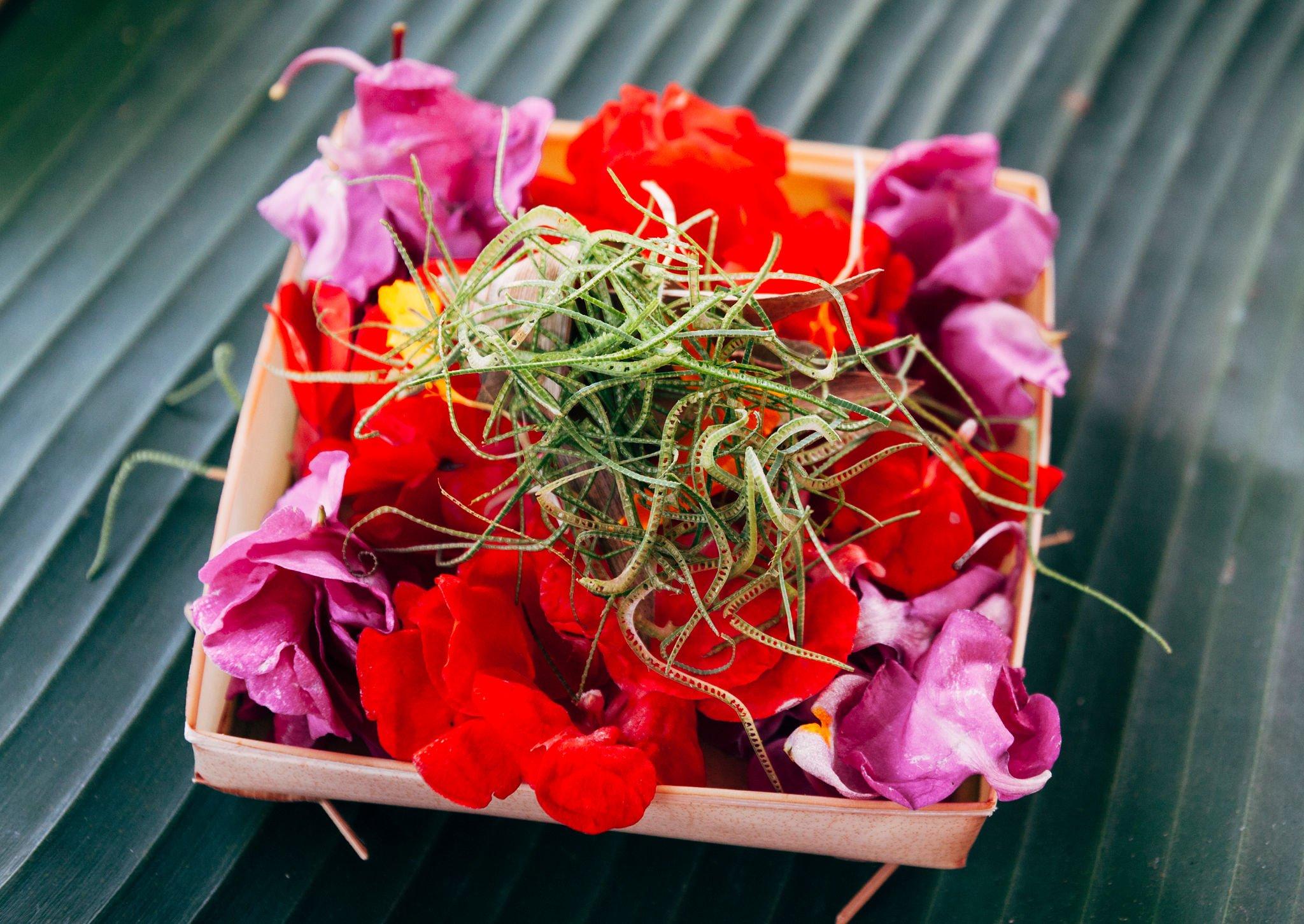
Every element within a Canang Sari has a specific meaning and purpose, honoring different Hindu deities and aspects of life. Let's explore the components that make up this beautiful offering:
Ceper (Base): The base of Canang Sari is made of young palm leaves called "ceper," symbolizing the earth and the moon.
Porosan: Made from betel leaves, lime, and gambir, porosan represents Tri Premana (thought, words, and behavior) and Tri Murti (Brahma, Vishnu, and Shiva).
Rice (Wija): Rice symbolizes Sang Hyang Atma, the divine force that gives life to the body.
Fragrant Oil: Fragrant oil represents peace of mind, essential for harmony in life.
Sampian Urasari: This represents the wheel of life, comprised of interconnected janur (palm leaf) segments.
Kembang Rampai: Different colors and types of flower petals are carefully chosen to symbolize various directions and deities. White petals represent the east (God Isvara), red petals represent the south (God Brahma), yellow petals represent the west (God Mahadeva), and blue or purple petals represent the north (God Vishnu).
In some regions, Canang Sari may also include old Chinese coins or paper money as "sesari," as well as food items like cookies, crackers, or candies to demonstrate gratitude and selflessness, with the intent that even stray animals can partake.
The Making Of
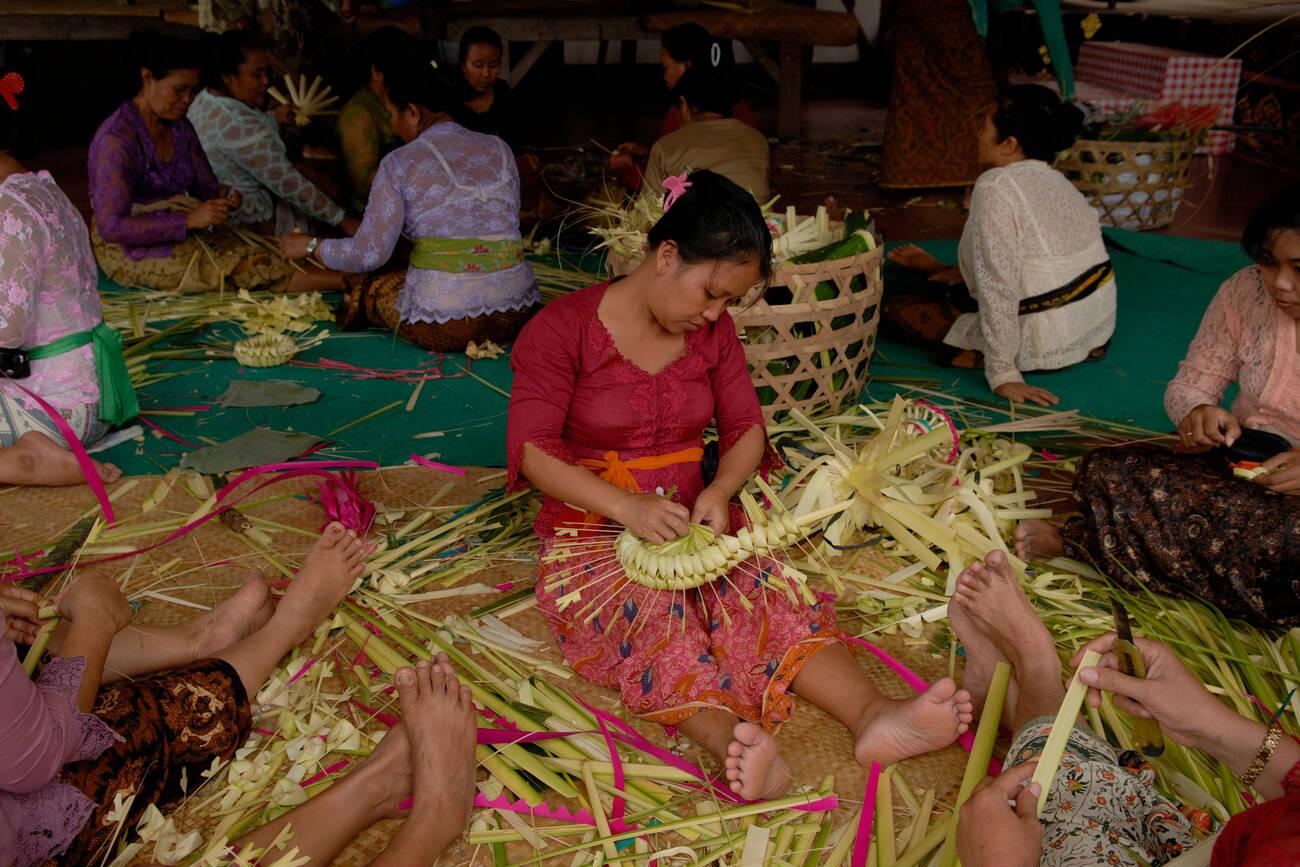
The creation of Canang Sari is an intricate process traditionally entrusted to Balinese women. It is considered a daily task, and a skilled Balinese wife is expected to know how to make one. This ritual of creating Canang Sari is called "metanding." In the past, women would sit together to craft 50-70 Canang Sari, using 15-17 for daily offerings. However, in today's world, where more Balinese women have jobs outside their homes, pre-made Canang Sari is available in the market.
The Morning Ritual
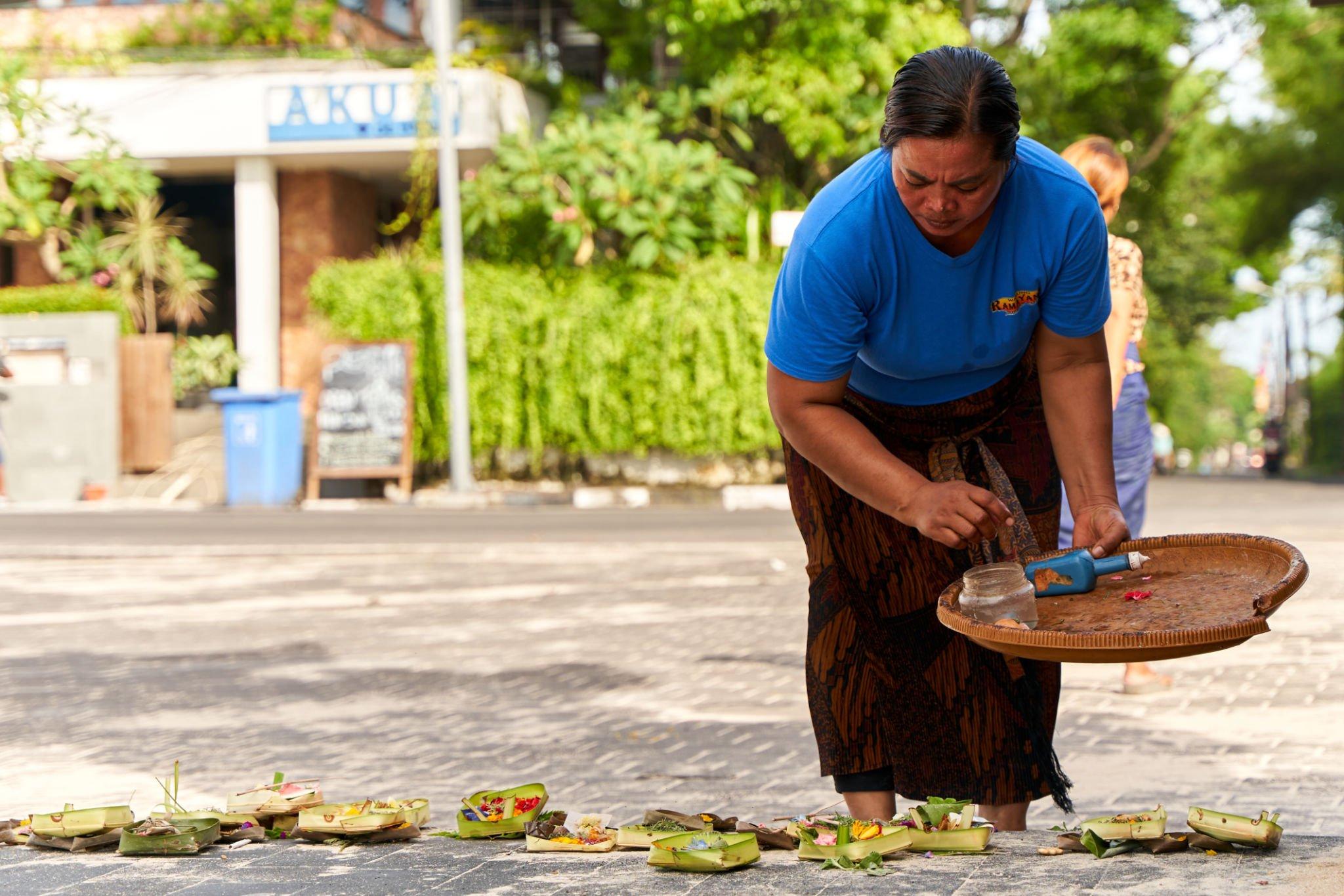
While some may purchase Canang, women continue to be responsible for the daily offerings, and the sacred purpose of this morning ritual remains the same. After completing the Canang Sari, Balinese Hindus typically light incense and sprinkle holy water on it. This holy water, known as "tirtha," is not ordinary tap water but is prepared through a meticulous ritual that can take days. Holy water from different temples may serve distinct functions. During this ritual, prayers are spoken to represent the elements of the earth that sustain human life: water, wind, fire, and earth. Balinese women often wear a sash or sarong, known as "Kamen," during the morning offering to show respect for the gods, reflecting the deep reverence ingrained in this ancient tradition.
Highly-Regarded Spiritual Offering
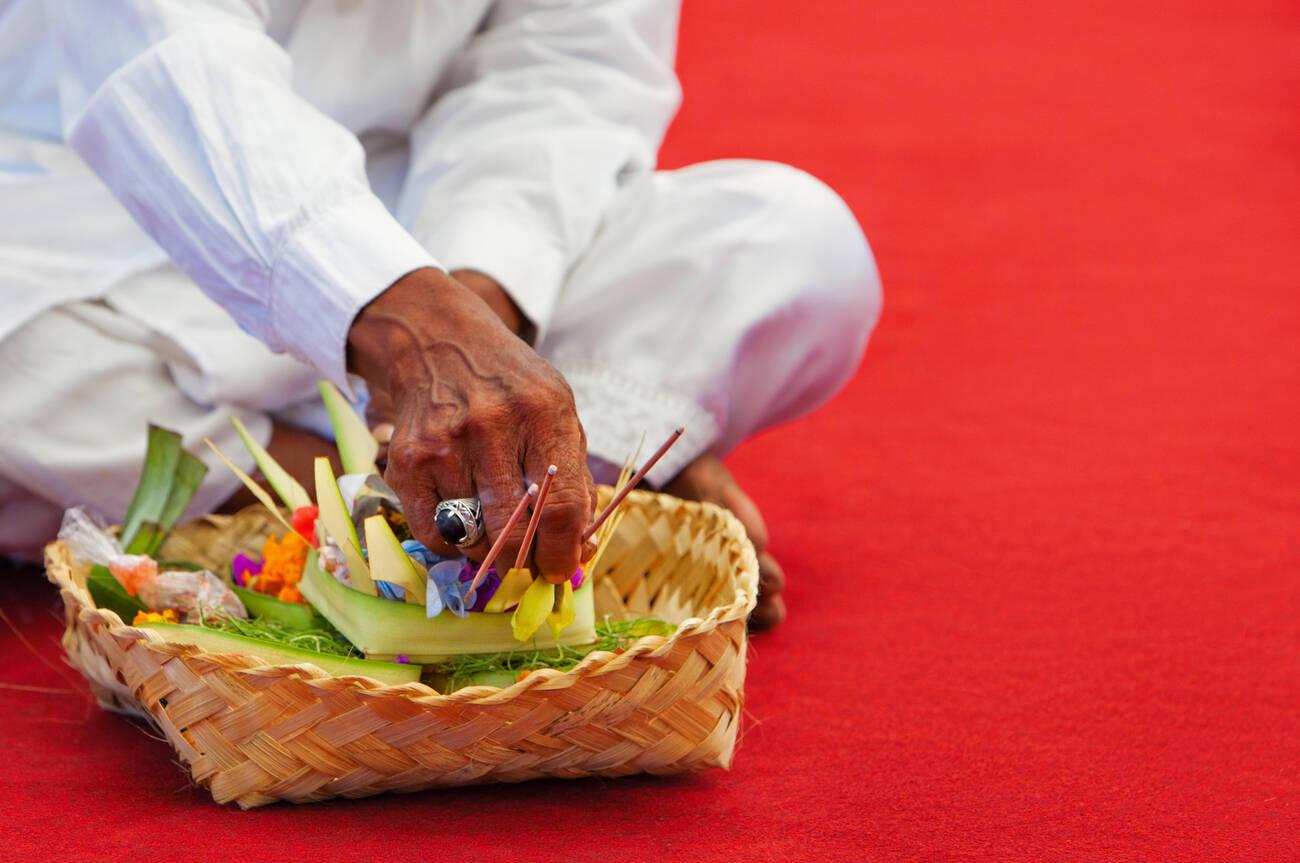
Since it's virtually placed everywhere on the street on daily basis, it is crucial for visitors to Bali to understand the deep respect and significance associated with Canang offerings. Deliberately stepping on, kicking, or disrespecting Canang Sari or other sajen is strongly discouraged, as it may lead to unsettling encounters or disturbances, as per local beliefs. There are stories about spiritual manifestations or possessions that happened to those who disrespect or purposefully disregard Canang offering. Even for those who do not share these beliefs, it is essential to honor and respect Bali's rich cultural traditions and customs, and by doing so, visitors can preserve the island's spiritual and cultural heritage while exploring its enchanting landscapes.
Canang Sari is more than just a daily offering; it is a living testament to the deep spiritual connection of the Balinese people with their gods and their environment. The intricate components of Canang Sari, from the base to the flower petals, hold profound meanings and symbolize the delicate balance between good and evil. This ritual is a beautiful embodiment of gratitude, harmony, and devotion, showcasing the rich tapestry of Balinese culture and spirituality. The Canang Sari's vibrant presence on the streets and in the temples of Bali not only adds to the island's natural beauty but also exemplifies the profound spirituality and cultural richness of this unique place.



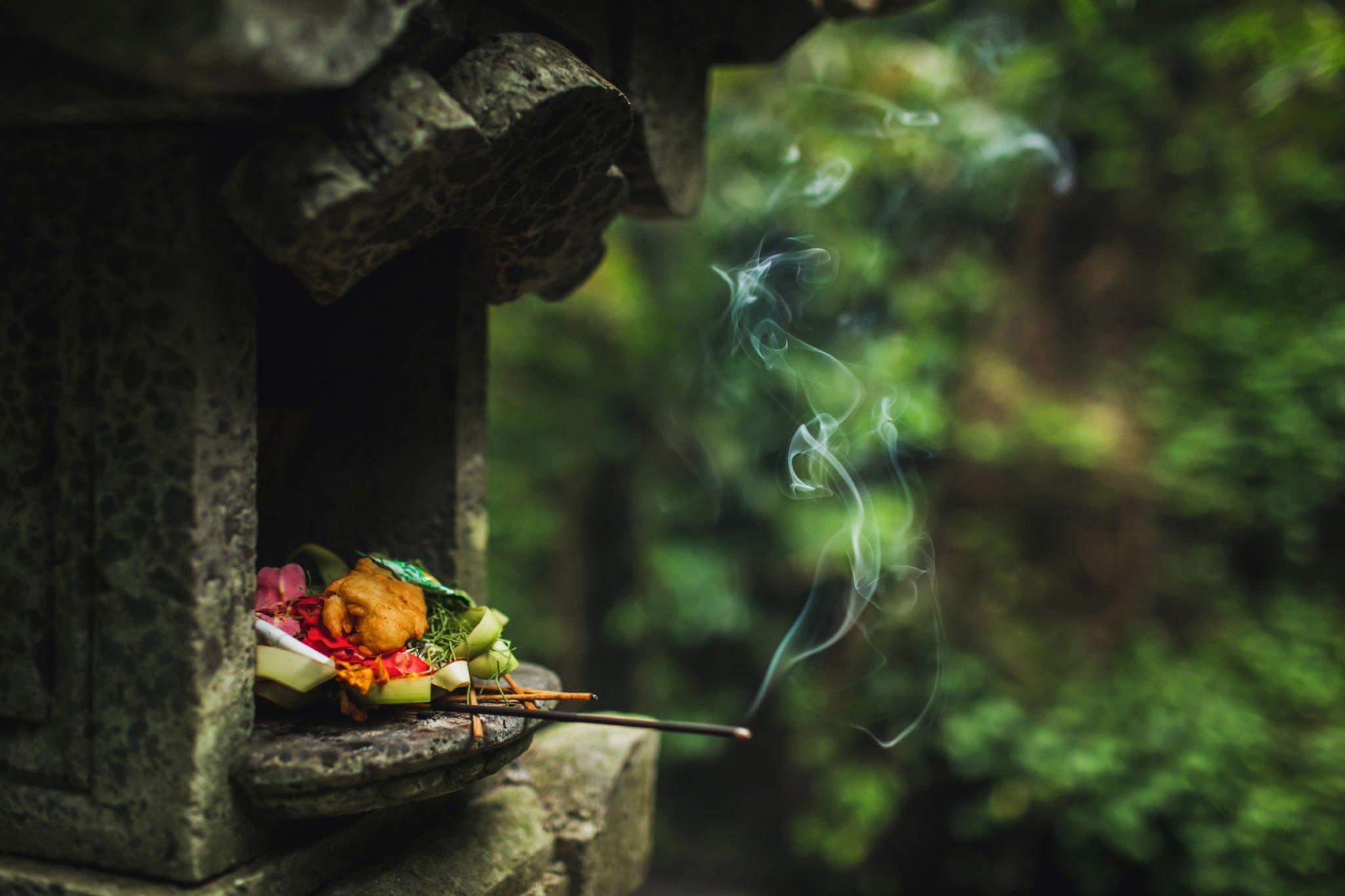
 Billy Bagus
Billy Bagus
 Oct 27, 2023
Oct 27, 2023




